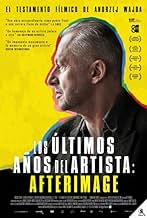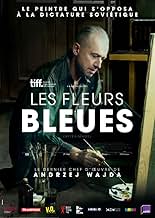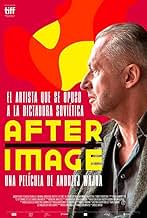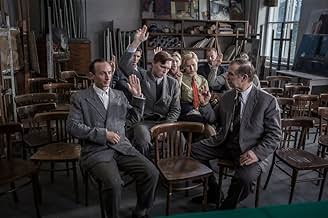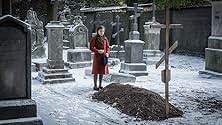La historia del carismático pintor Wladyslaw Strzeminski, quien se opuso al realismo social y conservó su propia libertad artística a pesar de los obstáculos políticos.La historia del carismático pintor Wladyslaw Strzeminski, quien se opuso al realismo social y conservó su propia libertad artística a pesar de los obstáculos políticos.La historia del carismático pintor Wladyslaw Strzeminski, quien se opuso al realismo social y conservó su propia libertad artística a pesar de los obstáculos políticos.
- Dirección
- Guionistas
- Elenco
- Premios
- 2 premios ganados y 12 nominaciones en total
- Dirección
- Guionistas
- Todo el elenco y el equipo
- Producción, taquilla y más en IMDbPro
Opiniones destacadas
Humorous, surprising, and informative, Dr. Peterson tells us why skateboarding boys and girls must be left alone, what terrible fate awaits those who criticize too easily, and why you should always pet a cat when you meet one on the street.
What does the nervous system of the lowly lobster have to tell us about standing up straight (with our shoulders back) and about success in life? Why did ancient Egyptians worship the capacity to pay careful attention as the highest of gods? What dreadful paths do people tread when they become resentful, arrogant, and vengeful? Dr. Peterson journeys broadly, discussing discipline, freedom, adventure, and responsibility, distilling the world's wisdom into 12 practical and profound rules for life. 12 Rules for Life shatters the modern commonplaces of science, faith, and human nature while transforming and ennobling the mind and spirit of its listeners.
The last movie of Andrzej Wajda tells the story of one of the best artists of the 20th Century, Wladyslaw Strzeminski.
The movie states that the situation of a true artist is miserable in spite of the geography, language and culture. Wladyslaw Strzeminski is a great painter, and is suffering due to his personal views, during a great social reformation in Poland. He loose his job, artist license canceled, and ignored in every corner of life. Though his students try to support him, it doesn't make much use. Hungry and sick, a great artist faces the tough realities of life.
The performance of the cast are amazing. Boguslaw Linda as Strzeminski and all the remaining cast have done a wonderful job. Photography and direction is so superb.
I noticed the audience after the movie, they had tears in their eyes. It is so heart touching. Do not miss this movie, if you are a real movie freak!
It was crazy how they used the system to basically suppress him as the qualifications to work in his country were ridiculously and being crippled met that he did not meet enough standards to receive a stamp on his work Visa that said he could work as an artist. The art store would not even sell him paint if he did not have his work ID. So this guy wanted to work and was more than capable of being an artist despite his limitations, but they would not simply because his thoughts went against what was popular at the moment.
I find it interesting that movies about the events around World War II seem to be popping up a lot. My first thought was that people are getting tired of movies about Iraq or Afghanistan like possibly people got tired of the constant references of Vietnam in every 1980s TV show, but I'm starting to think that's not the case. Even though life in the present is no where near as hard as what they went through back then, I'm noticing some trends from yesteryear coming back into fashion and these movies are used to keep in are minds fresh the idea that those who do not know history are doom to repeat it.
I don't know if this story is based on truth, but it's definitely inspired by things that did happen, which makes it a very educational film, but at the same time it was very entertaining, with great acting and very good visuals. The relationship between the painter and his students was very colorful. Afterimage does a great job at hinting at things without hitting you over the head with it, which I liked.
Not what I was expecting when going to the theater, but well worth watching.
http://cinemagardens.com
The film is about the cruelty of the Stalinist period and how it intervened and interfered in the private lives of the common citizen and all the more so in the sphere of art, which "had to serve the people and the final victory of socialism". There are no throats being cut, people being shot or hanged. No spanking. Everything takes place in and "orderly way", for strict rules must be followed. Or perhaps only almost always! This reminds us of Kieslowski's film about killing or the thick atmosphere of Arthur Koestler's "Darkness at noon". Little by little art, i.e. the protagonist, is being suffocated. It is like cutting his veins, but not at once, slowly, in slow motion. Let him bleed to death, but "naturally". That was really a very hard time and Andrzej Wajda knows what he is talking about, for he experienced it "on his own skin", as you say in Polish. A symbolic image summarizes the pic: the window in the artist's dwelling is suddenly veiled by a red banner. A painter can somehow bear poverty, but can he survive without light? Brushes, paint? Wajda's choice of the actor (Boguslaw Linda) to embody Wladyslaw Strzeminski, one of the great Polish artists and art professors of that period, was fundamental to the artistic value of the picture. Bearing also in mind the fact that he had to play a cripple, who had lost two limbs, certainly made his acting even more daunting. And the outcome is certainly impressive.
Another factor that helps sooth the dreariness of the artist's predicaments is the strong presence of the teenager actress (Bronislawa Zamachowska) who plays his daughter. Her seemingly matter of fact reactions to reality and only rare expressions of deeper feelings function as a balance between the drama we witness and the everyday chores or the mere sipping of tea. "There are holes in my shoes" or "You smoke too much". His adoring students, on the other hand, may represent what was left of hope in those days. Their solidarity with the aging, crippled professor was an omen of better times to come, for who can defeat youth? And who can defeat art? The material shabbiness of those times, when "all were equal, but some were more equal than others", with food rationing, very poor dwellings etc. is shown in detail. Some viewers used to cinematic tangibility may not appreciate some of Wajda's discreet, very subtle hints and symbolic images, but, no doubt, in artistic terms this pic is a comeback to his heydays.
Rio Film Festival 8th October, 2016 Tomasz Lychowski
¿Sabías que…?
- TriviaOfficial submission of Poland for the 'Best Foreign Language Film' category of the 89th Academy Awards in 2017.
- Citas
Wladyslaw Strzeminski: They praise the ones who suck up. They're silent about the real artists.
Julian Przybos: I spoke about this with Milosz. He also believes that an artist who can't speak with a full voice should be silent. Artists can be killed in two ways: either by talking about them too much or not at all.
- ConexionesReferences El hombre de mármol (1977)
- Bandas sonorasLandscape
Written by Andrzej Panufnik
Performed by Narodowa Orkiestra Symfoniczna Polskiego Radia w Katowicach
Conducted by Piotr Komorowski
Selecciones populares
- How long is Afterimage?Con tecnología de Alexa
Detalles
- Fecha de lanzamiento
- País de origen
- Sitios oficiales
- Idioma
- También se conoce como
- Los últimos años del artista: Afterimage
- Locaciones de filmación
- Productoras
- Ver más créditos de la compañía en IMDbPro
Taquilla
- Total en EE. UU. y Canadá
- USD 33,443
- Fin de semana de estreno en EE. UU. y Canadá
- USD 5,832
- 21 may 2017
- Total a nivel mundial
- USD 1,032,768
- Tiempo de ejecución
- 1h 38min(98 min)
- Color
- Mezcla de sonido
- Relación de aspecto
- 2.35 : 1




